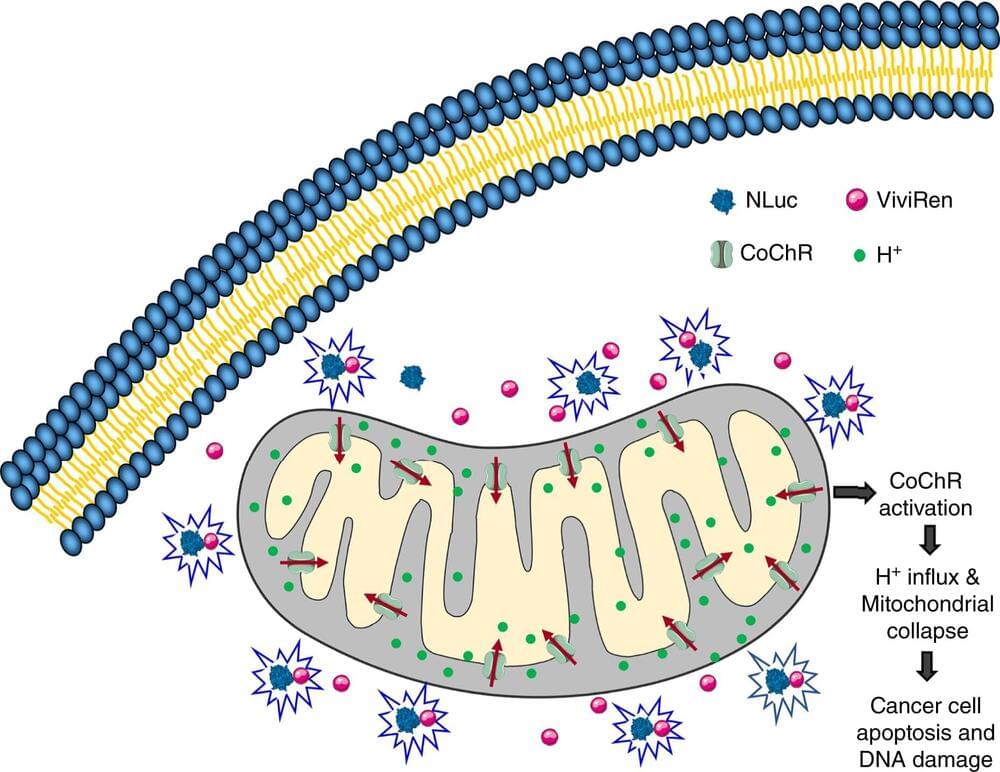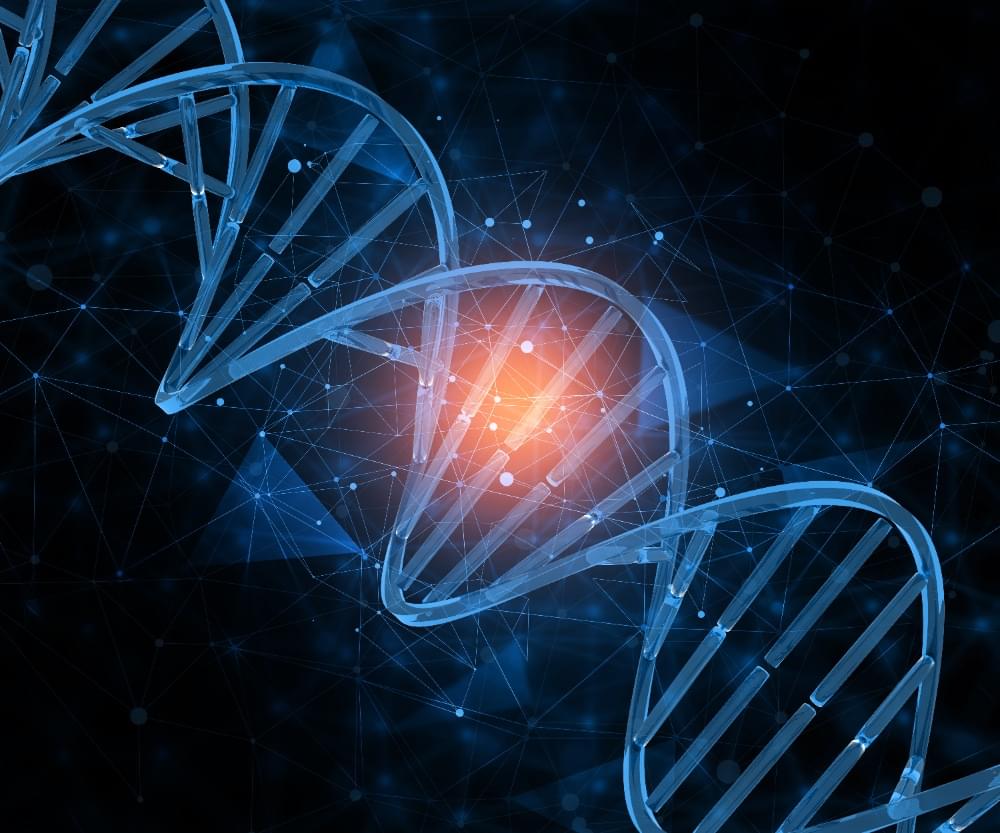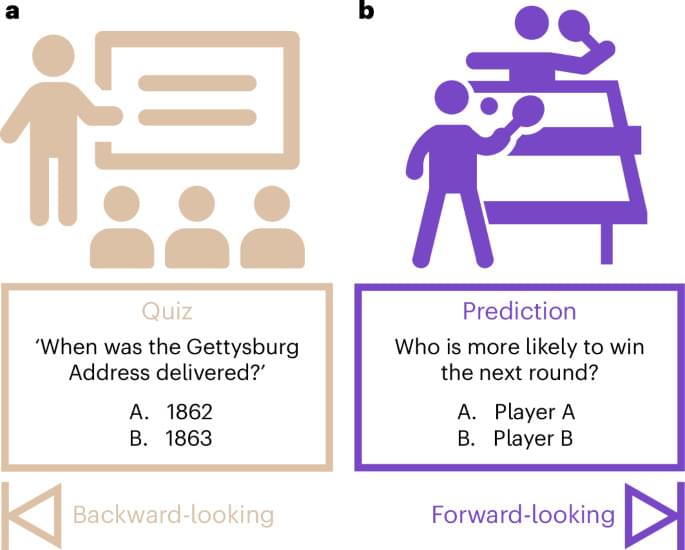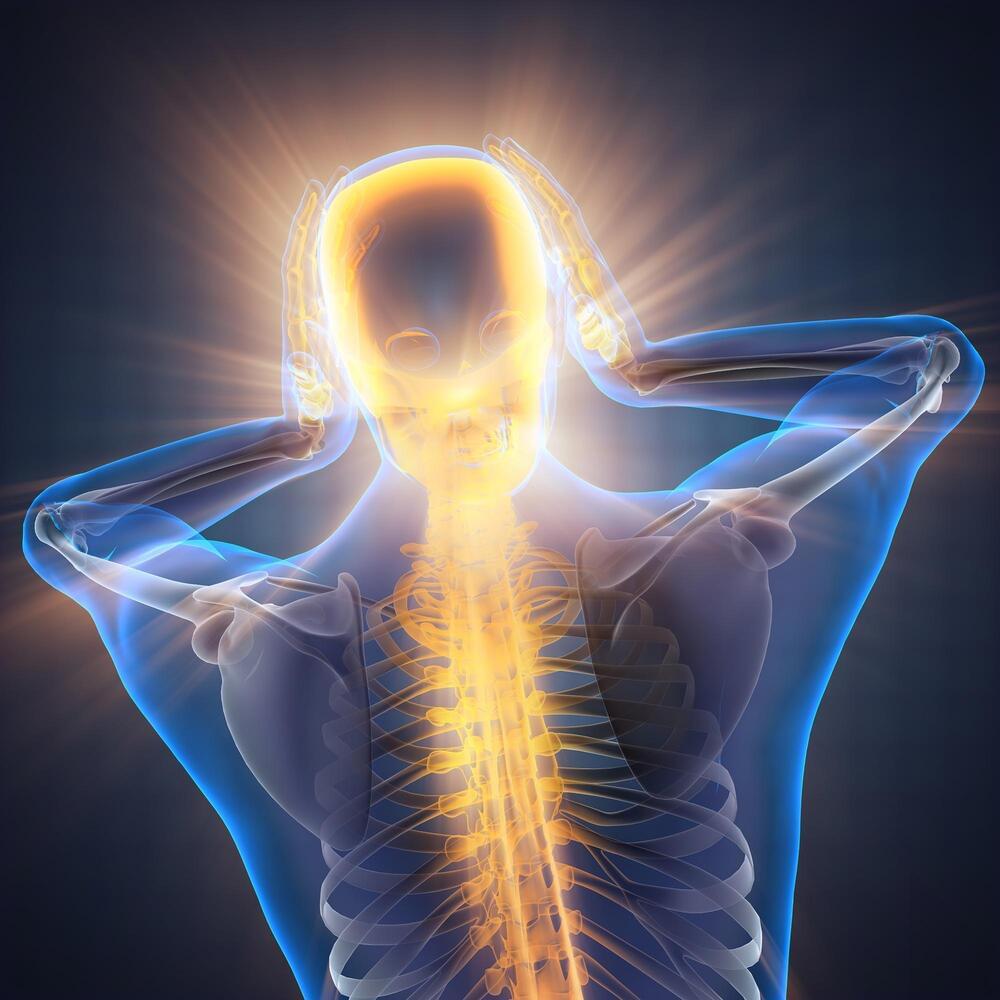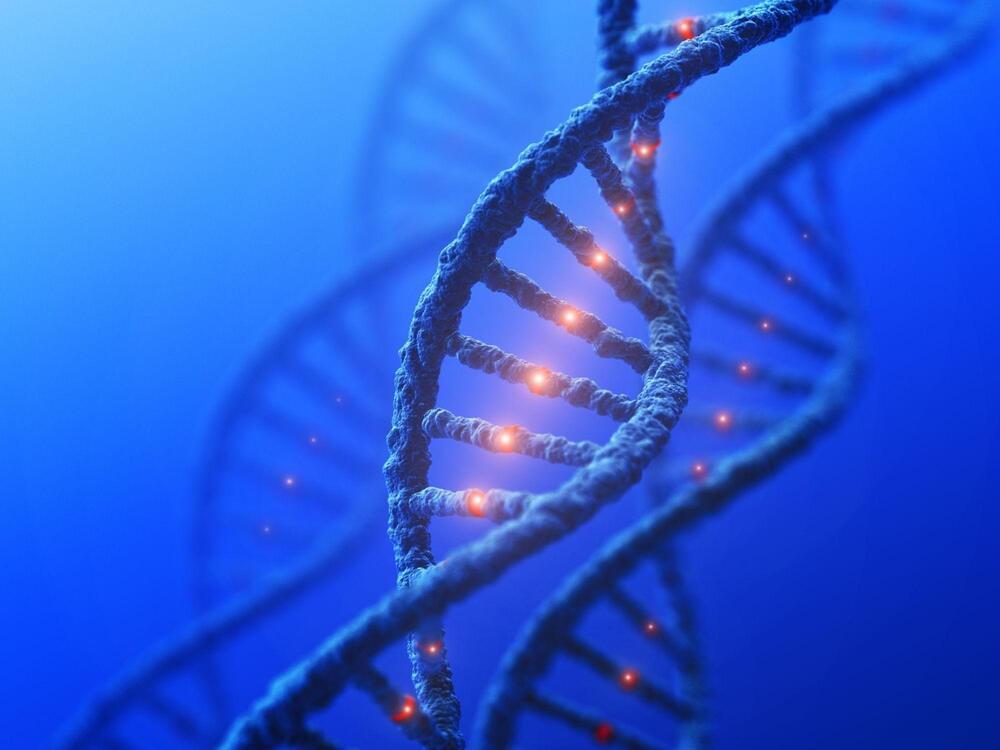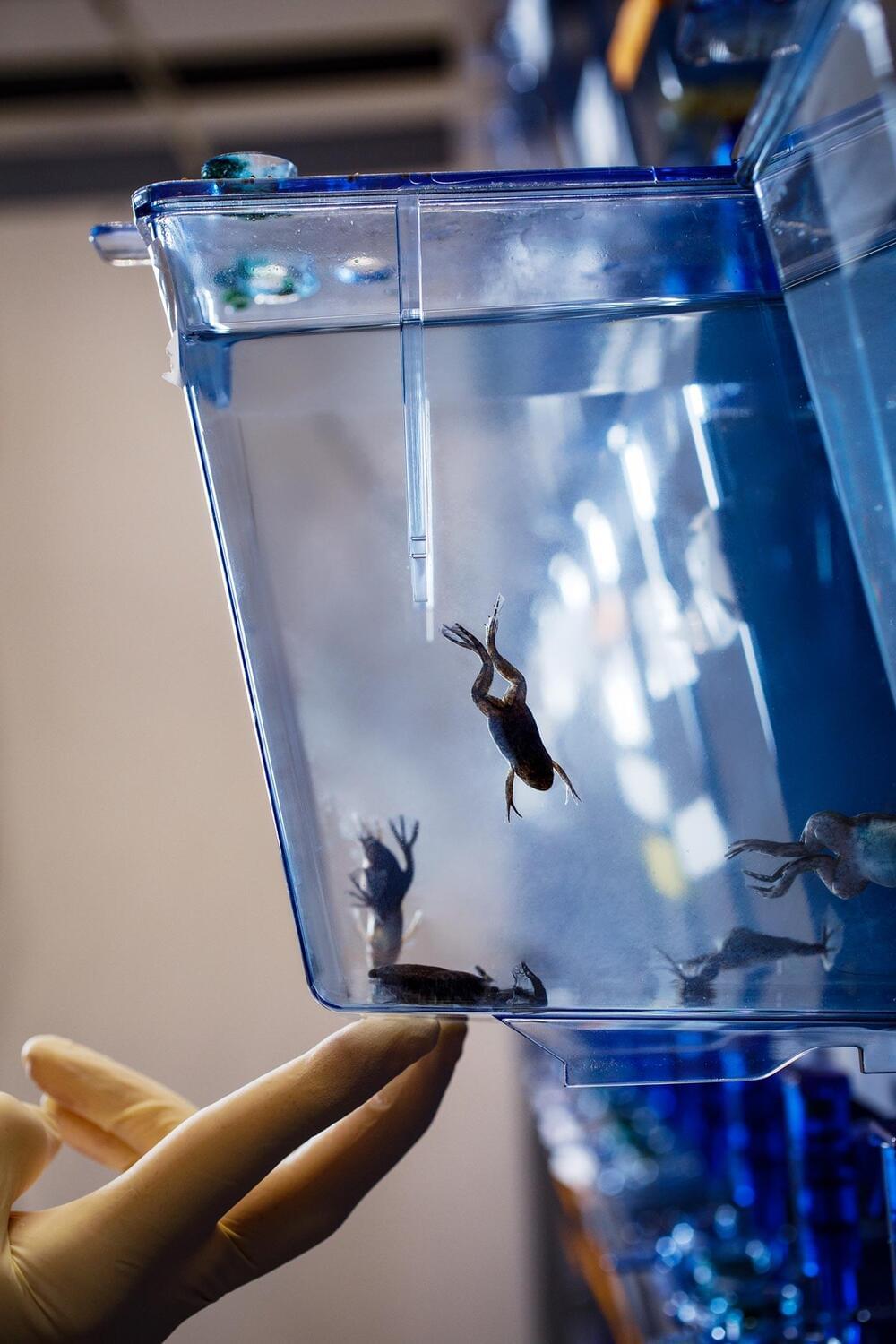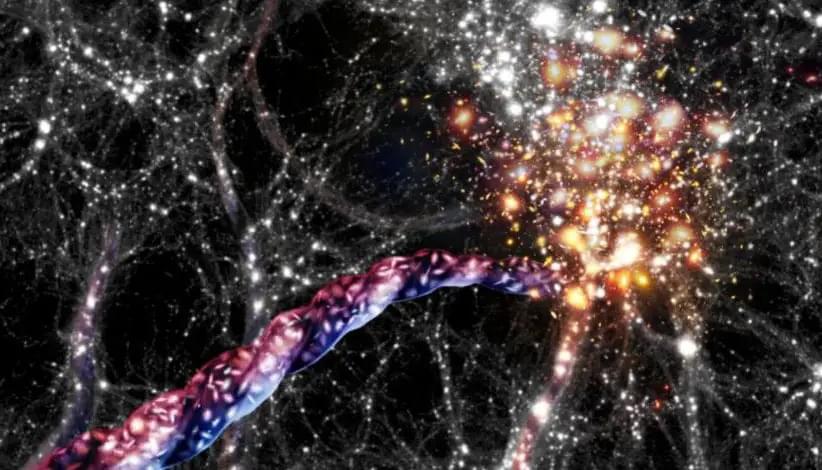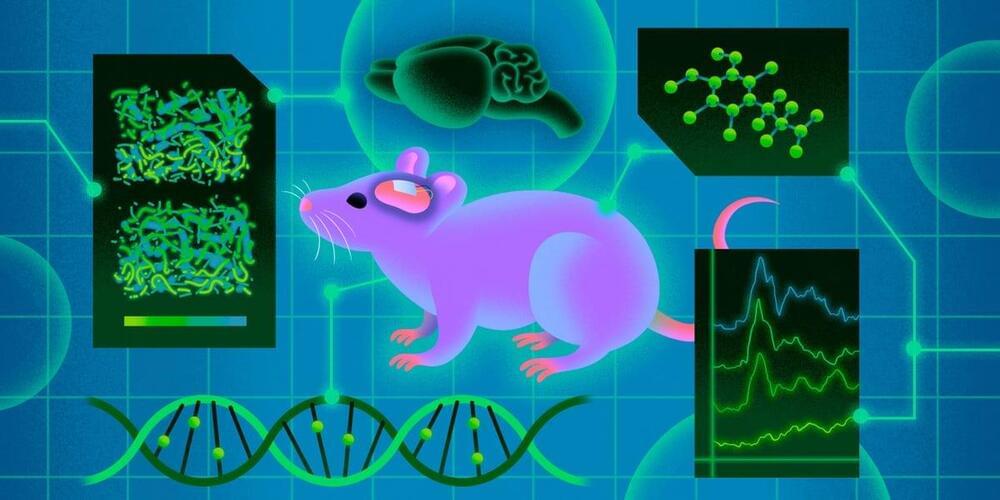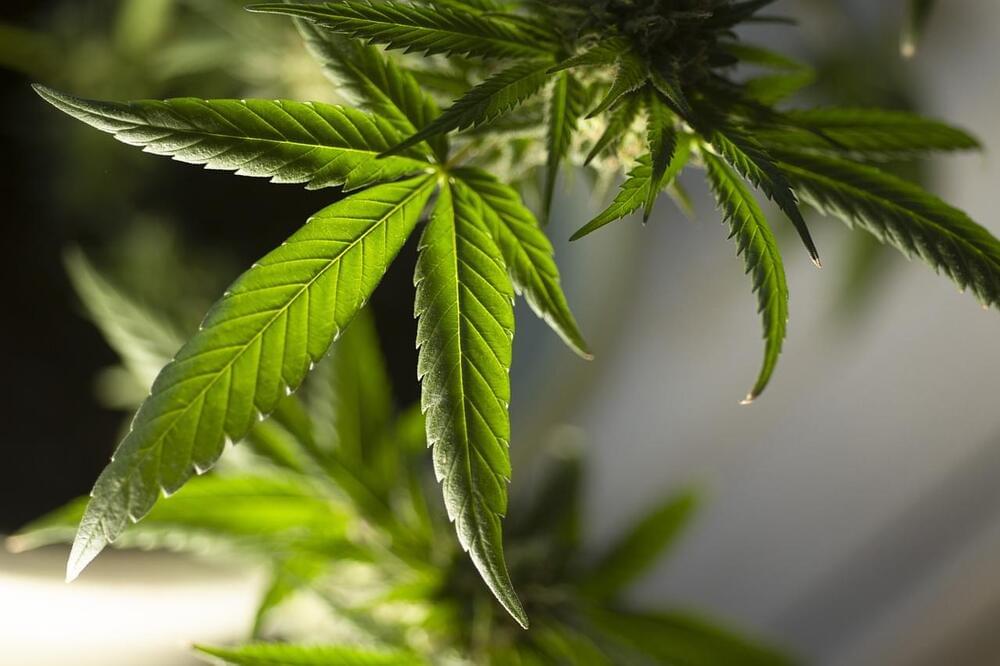Researchers are shining a light on cancer cells’ energy centers—literally—to damage these power sources and trigger widespread cancer cell death. In a new study, scientists combined strategies to deliver energy-disrupting gene therapy using nanoparticles manufactured to zero in only on cancer cells. Experiments showed the targeted therapy is effective at shrinking glioblastoma brain tumors and aggressive breast cancer tumors in mice.
The research team overcame a significant challenge to break up structures inside these cellular energy centers, called mitochondria, with a technique that induces light-activated electrical currents inside the cell. They named the technology mLumiOpto.
“We disrupt the membrane, so mitochondria cannot work functionally to produce energy or work as a signaling hub. This causes programmed cell death followed by DNA damage—our investigations showed these two mechanisms are involved and kill the cancer cells,” said co-lead author Lufang Zhou, professor of biomedical engineering and surgery at The Ohio State University. “This is how the technology works by design.”
